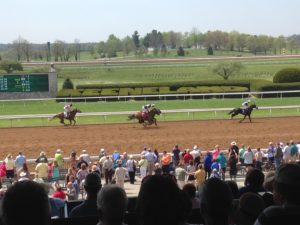Updated on January 27, 2018
What’s the Difference Between a Zinfandel and a Primitivo?
My friends Steve and Diem were coming over to celebrate my recent birthday, so I decanted a 2010 Paso Robles Aron Hill Primitivo before they arrived. Serendipitously, Steve brought me a 2003 Santa Barbara Valley Zinfandel for the occasion. This happy coincidence prompted me to write my first blog in some time. Why is that, you might ask?

I will relate a true story from one of my wine tastings to give you the answer. At this particular tasting the hostess provided all the wines for her guests to taste. I arranged them from lighter to heavier and guided her guests through the tasting. We discussed for each wine how to evaluate the appearance, flavor expectations based upon the nose, and then how those flavor profiles did or did not change upon the palate (flavors are enhanced when your mouth warms up the wine). The last wine in the lineup was a Primitivo. The hostess pulled me aside and lamented to me that she did not have a Zinfandel to close out the tasting. I replied to her, with a knowing wink, that “Primitivo is the Italian varietal that is genetically equivalent to Zinfandel–but of course you knew that–which is why you are closing out the tasting with the Primitivo!”
You may have tasted Zinfandel and found that it did not taste like you expected. especially if you recently had a different Zinfandel! The grapes in a cluster of Zinfandel often ripen unevenly. Thus, if a winemaker has the entire cluster harvested at the same time it can include some unripe grapes, perfectly ripe grapes, and overripe grapes in the same cluster. The best Zinfandel I have ever tasted is from a small grower/vintner in Paso Robles called Red Soles Winery. On a vineyard tour the owner explained that he had historically grown and sold off all his grapes, but more recently started making his own wine from his best vines. Since his production volume is small, he picks the grapes only when they are perfectly ripe—sometimes passing through the vineyard up to six times during the course of his harvest. Of course, this is never done with large scale productions, as it would be cost prohibitive.
Zinfandel grapes will grow well in hot areas. The historic home of the genetically equivalent Primitivo is in Southern Italy, where temperatures are much warmer than in the north. California is the leading Zinfandel producer in the U.S. and the hot Central California vineyards produce the most juice. Lodi, likewise, produces a lot of grapes, which are most often used for blends or White Zinfandel production. Amador County is known for it’s jammy (the result of overripe fruit), full bodied style, accompanied by sweet aromatics. Cooler California coastal areas run the risk of the grapes producing too much acidity, but in the case of warmer years–or in Paso Robles appellations where the hot days are cooled by maritime evenings–the result can be exceptionally smooth and sumptuously complex.
How did m y Primitivo stack up against Steve’s Zinfandel? It really is an interesting comparison in more than one way. On the one hand the Primitivo weigh’s in with a high alcohol content of 15.8%. This is a result of a fermentation process which converted all of the high sugar content in the grapes, generated by the warm growing season, into alcohol. On the other hand the Zinfandel grown in the more coastal (and cooler) Santa Rita Hills resulted in grapes with more acidity and less sugar—thereby generating a wine with only 13.8% alcohol.
y Primitivo stack up against Steve’s Zinfandel? It really is an interesting comparison in more than one way. On the one hand the Primitivo weigh’s in with a high alcohol content of 15.8%. This is a result of a fermentation process which converted all of the high sugar content in the grapes, generated by the warm growing season, into alcohol. On the other hand the Zinfandel grown in the more coastal (and cooler) Santa Rita Hills resulted in grapes with more acidity and less sugar—thereby generating a wine with only 13.8% alcohol.
Aside from the area that produced the wines, the age of the wines created a very different tasting experience. The Primitivo is a 2010 vintage. It still had a lot of primary black fruit aromatics to offer. The Zinfandel, however, was from a 2003 vintage. This wine was showing much less fruit and much more tertiary aroma characteristics. If you need a refresher on primary aromas, secondary aromas, and tertiary aromas, see my earlier post entitled “Appreciating the Aromatics in Your Wine Glass” here.
By the way, what did I pair with these high alcohol/flavorful wines? I chose to serve BBQ ribs. Pairing food and wine is important because food has more of an impact on wine than wine has on food. BBQ ribs are flavorful and so the wine has to be big and bold; otherwise it would be overpowered by the food and taste more like water and less like wine. So the next time you are going to dinner at a friend’s house and they are serving something that could be paired with a bold wine, consider bringing a Primitivo and a Zinfandel; if nothing else, the tasting comparison should prove interesting and you would likely be educating your friend on the shared genetic history of these two varietals. Cheers!

Posted on May 21, 2017
The Best Champagne Tour Ever!
Now that is a bold statement…and one that I stand behind completely. Whether you are interested in learning how true Champagne is made, or want to enjoy the French countryside while listening to a local vintner explain what it is like to live and work in the rarified air of Epernay, or simply want to taste and buy world renowned sparkling wine at a fraction of the cost you would pay at a liquor store–this tour is for you. And the best part? It is only 30 euro per person…for a half day tour…including pick up and drop off…and two large tasting pours. Having spent far more for far less in Napa, I cannot say enough good things about Domi-Moreau, located in the Champagne region, near the village of Epernay, a short train ride from Paris.


As a wine expert, I have enjoyed many tours where the producers follow the traditional method for their sparkling wine offerings. This tour is different. Never have I been picked up by the owner/vintner and taken to the vineyard, personally shown how they work the fields through the seasons, then taken to the vinification site to see the actual coquard style press and the bottling process, then continued the tour to the tasting room where the owner poured the tasting samples, then been personally driven by the owner back to my original pick up point.
Nathalie and Max Domi are the owners of the Domi-Moreau Champagne House. They own and cultivate a total of 6 hectares (approximately 13 acres) of vineyards scattered throughout Epernay . They are one of 15,000 owners of vines and also one of 5,000 that produce Champagne themselves. The Domi-Moreau operation produces about 40,000 bottles annually. Most family vintners, like Nathalie and Max, sell directly to consumers and not to supermarkets. As you drive through the town it seems that every home has their own Champagne label
. They are one of 15,000 owners of vines and also one of 5,000 that produce Champagne themselves. The Domi-Moreau operation produces about 40,000 bottles annually. Most family vintners, like Nathalie and Max, sell directly to consumers and not to supermarkets. As you drive through the town it seems that every home has their own Champagne label  displayed outside, inviting you into their garage for a taste.
displayed outside, inviting you into their garage for a taste.
Only 10% of Champagne grapes are owned outright by the large Champagne houses. Most family operations either sell the grapes, or press their own grapes and then sell the juice to a large producer that they have developed a relationship with, such as the large co-op Nicolas Feuillatte.
 Many aspects of the business are tightly regulated, for example: which land parcels are allowed to grow Champagne grapes, grape varietals, pruning techniques, harvest dates, maximum yields, alcohol levels, time in the cellar for the second fermentation, etc. No wonder families pass down their business secrets from generation to generation (Nathalie and Max are the fourth generation in the family business!) Nathalie’s son is currently attending a specialized school, where he is learning the business with other children of wine making families. With strict regulation of the industry, the high price of land, and the fact that vineyard ownership is dominated by a huge amount of small, family owned holdings, it is interesting to note that the most common way for an operation to grow is by a marriage taking place between two Champagne families. The Domi-Moreau website explains it this way, “When Vines, Traditions And Passion Are In The Family Forever.”
Many aspects of the business are tightly regulated, for example: which land parcels are allowed to grow Champagne grapes, grape varietals, pruning techniques, harvest dates, maximum yields, alcohol levels, time in the cellar for the second fermentation, etc. No wonder families pass down their business secrets from generation to generation (Nathalie and Max are the fourth generation in the family business!) Nathalie’s son is currently attending a specialized school, where he is learning the business with other children of wine making families. With strict regulation of the industry, the high price of land, and the fact that vineyard ownership is dominated by a huge amount of small, family owned holdings, it is interesting to note that the most common way for an operation to grow is by a marriage taking place between two Champagne families. The Domi-Moreau website explains it this way, “When Vines, Traditions And Passion Are In The Family Forever.”
Nathalie picked us up for our tour in her mini bus and spirited us directly to her property. Champagne grapes grow best in chalky soil. By law no irrigation is allowed, but because chalk absorbs water the natural annual rainfall is enough to sustain the vines. This was pruning season, so she demonstrated for us (see video below) how she prunes the field, then explained what equipment she uses, how pruners are certified so that the exacting standards are maintained, even how the close knit community gossips about other neighbors while they are performing their annual pruning task amongst the vines. The picturesque village of Mancy, where their operation is located, has a population of only 250.
There are 35 parcels in the village that are officially approved to grow Champagne grapes. Every year adjacent parcels apply to be granted similar status…and every year they are turned down. As a result, a single hectare of vineyard property commands a price in excess of one million euro. As Nathalie states, “That makes me rich, yes? No!” Why? Because the land is used to grow grapes and the process of farming the land and then vinification of the grapes and sale of Champagne is extremely labor intensive and the rewards are only achieved when sales of the final product are completed, typically in small quantities at prices less than $20 per bottle.



Since the vineyard tour takes place with vineyard activity appropriate to the season (in our case, pruning season), Nathalie breaks out a picture book to show the vineyard activity at other times of the year. After demonstrating how each grape style is pruned differently, she explains that she passes through the fields three times during the growing season to train the vine’s growth. Then she takes time for a short vacation in August. Harvest brings with it a huge challenge — manpower. All Champagne grapes must be hand harvested. That is fulfilled by a crew of gypsies that return year after year to work her vineyard. I was interested in how they are paid. Nathalie explained there are three ways to contract with gypsies: 1) pay them by the liter, 2) pay them by the day, or 3) pay them by the harvest (with a maximum number of days, typically 10 days). Nathalie and Max choose option number three, because of the incentive for the workers to complete the harvest as quickly as possible. Nathalie explained the benefit of a quicker harvest, since the gypsies actually live on their personal property for the days they are working the vineyard harvest. The sooner they finish the sooner they move on. An additional expectation for the workers is that they are given Champagne to drink at the end of each day…and they can apparently  drink quite a lot!
drink quite a lot!
November and December are spent in the cel lar, making wine. Neighbors come over and help process the grapes through the press and into the cement holding tank below ground. A short fermentation results in a low alcohol base wine. Then additional yeast and sugar are added to the wine that is placed in the bottles and the bottles are then capped. The carbonation from the secondary fermentation takes place within th
lar, making wine. Neighbors come over and help process the grapes through the press and into the cement holding tank below ground. A short fermentation results in a low alcohol base wine. Then additional yeast and sugar are added to the wine that is placed in the bottles and the bottles are then capped. The carbonation from the secondary fermentation takes place within th e bottle, producing the fine bubbles which Champagne grapes, vinified in this traditional method, are known to produce.
e bottle, producing the fine bubbles which Champagne grapes, vinified in this traditional method, are known to produce.
But how to get that yeast out of the bottle, once it has performed its magic? The bottles that are being readied for sale are placed in a riddling rack, and the owners turn them by hand every night. Over the course of about six weeks they are able to move the spent yeast to the cap of the bottle. Bottles are left upside down (or “sur pointe”), awaiting the time that they will have the cap and yeast  disgorged. Recently Domi-Moreau has adopted a mechanical method to open the bottle, disgorge the spent yeast, add a small amount of sugar solution (depending upon the sweetness level desired for the final product) to top off the bottle, and then cork the bottle in preparation for installing the wire cage around it.
disgorged. Recently Domi-Moreau has adopted a mechanical method to open the bottle, disgorge the spent yeast, add a small amount of sugar solution (depending upon the sweetness level desired for the final product) to top off the bottle, and then cork the bottle in preparation for installing the wire cage around it.
Each bottle is put through this process by hand and then the label is applied. Champagne does not improve by cellaring the bottle. In fact, the longer it is aged the more likely the cork will degrade, causing the bubbles to be less lively and the wine to potentially aquire off aromas/flavors. It is generally true that Champagne is best consumed as soon as it is bottled for sale.  That is why Domi-Moreau will keep the capped bottles sur pointe with the yeast inside and not remove the yeast through the final processing until they are ready to sell more inventory. This assures the freshest possible product.
That is why Domi-Moreau will keep the capped bottles sur pointe with the yeast inside and not remove the yeast through the final processing until they are ready to sell more inventory. This assures the freshest possible product.
I can attest to the amazing value of the final product. Nathalie and Max produce Champagne in various styles. Cuvee d’ Argent is a blend of Chardonnay, Pinot Noir and Pinot Meunier. Cuvee Blanc de Blancs is 100% Chardonnay, made from their best grapes (including premiere cru classified vineyards), Cuvee Tradition uses aged Chardonnay wine from their property’s oldest vines. Cuvee Rosee is a blend of Chardonnay and Red Champenoise Wine. Of course, everyone has their favorites. We found it so hard to choose that my wife and I ended up purchasing six bottles to enjoy during the few remaining days of our vacation, which we spent in nearby Paris. But this is not all the French wine we consumed. More about that in blog posts to come!


Posted on February 11, 2017
Arizona Wine…Really?
When local wine savant Daniel Isenhart posted recently that Arizona wine is making a mark, I knew that it was time to give AZ more than a passing glance. It is oft quoted that winemakers can make bad wine with good grapes, but they cannot make good wine from poor grapes. What makes an emerging wine production area worth watching? Let’s look at some factors for a great winegrowing region and why Arizona may have what it takes.![]()
The French will tell you that terroir (a derivative of “terre,” or land) is the most importa nt aspect to growing stellar grapes. The concept includes more than just the land, it includes other environmental aspects of the territory as well. French regulations require regional labelling under the controlled designation of origin (Appellation d’origine contrôlée), or AOC system. It represents strict designations for areas of grape growing, authorized varietals, yields, and other grape growing and winemaking regulations. In the United States we use the American Viticultural Area, or AVA designation. Wine growing regions in Arizona that have been granted AVA status are Sonoita and Willcox. Time will tell if these areas produce superior vintages.
nt aspect to growing stellar grapes. The concept includes more than just the land, it includes other environmental aspects of the territory as well. French regulations require regional labelling under the controlled designation of origin (Appellation d’origine contrôlée), or AOC system. It represents strict designations for areas of grape growing, authorized varietals, yields, and other grape growing and winemaking regulations. In the United States we use the American Viticultural Area, or AVA designation. Wine growing regions in Arizona that have been granted AVA status are Sonoita and Willcox. Time will tell if these areas produce superior vintages.
Wine grapes thrive  at latitudes between 30 degrees and 50 degrees in the Northern Hemisphere. These parameters essentially cover all of America and is the reason that prospective winemakers are trying their hand at growing grapes and making wine seemingly everywhere. But the quality of grapes is dependent as much on the climate and characteristics of the land it is grown upon as the techniques that are applied to the growing vines.
at latitudes between 30 degrees and 50 degrees in the Northern Hemisphere. These parameters essentially cover all of America and is the reason that prospective winemakers are trying their hand at growing grapes and making wine seemingly everywhere. But the quality of grapes is dependent as much on the climate and characteristics of the land it is grown upon as the techniques that are applied to the growing vines.
Vineyards can be at a high altitude, which makes the climate cooler, but be planted on a slope, which catches the rays of the sun more directly and for a longer period of the day. The poorer the soil quality the better the grape quality, generally speaking. This is because vines can grow with scarce nutrients in the soil and the vine will not generate large grapes, which will dilute the flavor in the resulting wine. Trellising techniques keep the grapes in the sun, or out of the sun, lower to the ground or well off the ground, for various reasons. The Arizona wine growing regions are all planted at altitude. This can compensate for the high average daily temperatures; temperature swings help retain natural acidity.


With rootstocks well established, vineyards can change the grape varietals they grow simply by grafting a new plant onto the existing rootstock. Producers that are keen to capitalize on popular trends (a “Teutonic” approach to winemaking) can relatively quickly make a dramatic shift in their business model. The Trentino valley in Italy, for example, primarily grew red wine grape varieties since the 7th century BC, but now 70% of their production is white wine. Certain varietals ripen more fully in specific microclimates than other varietals. It can take years to determine what varietals work best in any particular planting zone.
While the soil will impart certain characteristics to wine grapes grown in specific areas and growing techniques will impact the quality of grapes grown, never underestimate the fact that the magic really happens in the cellar, under the guidance of a competent winemaker. Winemakers have the ability to make countless decisions when creating a signature style of wine. Crush the grapes? Press the grapes? Whole clusters, or destemmed? Should the skins remain in contact with the juice to impart more tannins/color? Adjust the acids or sugars in the juice? Use wild or cultured yeasts to convert the sugars to alcohol? How much filtering and fining should the wine undergo, since this strips flavor but is necessary so customers don’t think the hazy wine is faulty? Ferment/age in stainless steel? Oak? Cement? How long? Utilize a secondary malo-lactic fermentation to soften red wines or create the “buttery” flavor in white wines? Blend the wines or release a single varietal offering?
Emerging areas have to experiment in order to hit upon the right mix of winemaking techniques that bring out the best that the local grapes can produce. My experience at Chateau Tumbleweed in Arizona’s Cochise County shows that this process is taking place. Just look at the label and you will see exactly what winemaker Joe Bechard is doing to manipulate his wine offerings. This is precisely the type of experimentation that will yield the best wine any terrior has to offer.


Of course, beauty is in the eye of the beholder. Are these the best wines I have ever tasted? No, but I have had the pleasure of drinking spectacular wines from iconic producers from around the globe. Many of these vineyards and producers have been around for over a hundred years. Did I like any of the wines enough to purchase them? Yes! Maybe you will like them; maybe you won’t. But the more transparent the winemaker is with the process and the more you know what winemaking style you gravitate towards, the better chance you will be able to make an educated decision just by reading the wine label alone.
Cheers!
Updated on December 6, 2016
Costco Versus My All Time Favorite Liquor Store
If you haven’t heard an update from The Tipsy Concierge in awhile, it is because this is the time of year in the alcoholic beverage sales industry known as “OND,” or October/November/December—obviously the high volume season for wine and spirit sales. Many distributors offer “special buys” during this time of year and since spirits don’t really go bad (and most newly released wines will age for at least a couple of years), it is a good time to stock up. If you know what you want and it is carried at a large retailer like Costco, chances are you don’t need assistance and can save yourself a couple of bucks. But if you need help finding the right gift, consider a knowledgeable small retailer that thrives on customer service. My absolute favorite liquor store is Hi-Time Wine Cellars in Costa Mesa, California. 
There are various ways retailers try to entice you to buy alcohol products at this time of year. Information signage, or “shelf talkers,” provide information for you to read. Upscale producers will often have their product offered for sale in a special, limited time packaging (perhaps including a couple of glasses, or an eye catching pre-wrapped container). Placement in the displays, where limited space is available, is always important. The phrase “top shelf” refers to the fact that the best offerings are going to be up top (where customers look most). Retailers know they often have only five seconds, from five feet away, in order to get you interested in purchasing their displayed product.
“Top shelf” items are reserved for the highest quality offerings. If you find yourself making a beeline for the bottom shelf on all your alcohol purchase outings, you probably don’t need to read any further. But if you are concerned about making a good impression, or interested in learning more about the wine you are drinking/giving as a present, then it is worth seeking out a retailer with not only a diversity of offerings, but also experience with various producers over a reasonable span of time (years…preferably decades).
My first job in the ind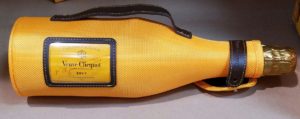 ustry was for Hi-Time Wine Cellars, a family-owned, high-end retail shop in Costa Mesa, California. Working at Hi-Time was a great way for me to further learn the differences in wines/spirits from around the world while I was taking certification classes to enhance my knowledge. The store has been around for over 50 years, and thrives on customer service while sporting a global range of wine and spirit offerings. Each department has its own expert buyer for their specific area of the store: Champagnes/American Wines/French Wines/New World and Old World Wines/Spirits. Hi-Time also offers specialty foods, cigars, and seasonal gift merchandise. The on-premise bar often offers unique tastings, as well as more formal educational opportunities. The staff is well-versed by each of the area-expertise managers, so everyone can be conversant on all the offerings, in any part of the store.
ustry was for Hi-Time Wine Cellars, a family-owned, high-end retail shop in Costa Mesa, California. Working at Hi-Time was a great way for me to further learn the differences in wines/spirits from around the world while I was taking certification classes to enhance my knowledge. The store has been around for over 50 years, and thrives on customer service while sporting a global range of wine and spirit offerings. Each department has its own expert buyer for their specific area of the store: Champagnes/American Wines/French Wines/New World and Old World Wines/Spirits. Hi-Time also offers specialty foods, cigars, and seasonal gift merchandise. The on-premise bar often offers unique tastings, as well as more formal educational opportunities. The staff is well-versed by each of the area-expertise managers, so everyone can be conversant on all the offerings, in any part of the store.
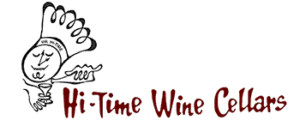
Customers at this store would often need assistance when searching for the right bottle to purchase, so I would start out by asking a few questions. Is the bottle for you, or for a gift? Did you want a specific varietal or are you looking for something different to try? Do your preferences lean towards New World style or Old World style? What is your price range? If shopping for someone else, was it expected to be consumed with their host at a dinner? If so, what food would be served?
I would always have to ask what the budget would be for this type of purchase. Customer looks can be deceiving, and this store was located near Newport Beach, California, an area where budgets can be all over the board. When a customer responds to the “what price range are we looking at” question with “it doesn’t matter” then I would have a lot of options to choose from. I have seen people drop $10,000 on a single visit. In fact, we would have to limit the number of Opus One bottles and special purchase Champagne that customers were allowed to purchase at this time of year, for fear that a few high end customers would take out the entire inventory and leave the rest of the customers wanting. I even helped the owner of the California Angels baseball team select some wines. Suffice it to say that customer service at this retailer is high on the list. We would never tell someone they were “going to like” our recommendation because everyone has variations with their palate. If one’s expectations were not met, we would rather discuss the specific reasons why it disappointed in order to better understand how to help that customer be more satisfied with their next selection, rather than lose the customer’s potential repeat business.
More normally a “special celebration purchase” would be in the $100+ range. At this level there is likely something “in the back” that can be retrieved for the customer looking to make a good impression. Limited quantity i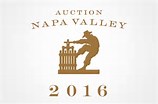 tems are often held in the stockroom instead of on the sales floor. Perhaps a product had all but sold out quickly, or maybe only a few bottles were purchased to begin with, or there could be library wines from a respected producer. Hi-Time regularly attends the annual Auction Napa Valley. Famous winemakers create special wines just for this charity event and retailers buy them in order to procure for their customers a truly exclusive offering. Try getting Costco to go into their back room and pull out something they don’t carry on the shelf for your special occasion gift giving, but don’t hold your breath!
tems are often held in the stockroom instead of on the sales floor. Perhaps a product had all but sold out quickly, or maybe only a few bottles were purchased to begin with, or there could be library wines from a respected producer. Hi-Time regularly attends the annual Auction Napa Valley. Famous winemakers create special wines just for this charity event and retailers buy them in order to procure for their customers a truly exclusive offering. Try getting Costco to go into their back room and pull out something they don’t carry on the shelf for your special occasion gift giving, but don’t hold your breath!
More often than not, the average consumer looks to spend in the $20 to $50 range. Even this budget offers a wide variation in quality. For this reason, many wine producers recognize the benefit of having the customer service staff taste their offerings. There were many times when a customer described what they were looking for and I recalled a wine I had tried (often with the winemaker) that fit the description. What better way to provide a good value to the consumer than to give a firsthand experience of what the wine tastes like and how it may be the perfect fit for the occasion?
One couple I helped was looking for a 2011 California red wine. They wanted to purchase many bottles so that they could open one every year, on their wedding anniversary. Very cute idea; but this posed a problem when they said their budget was $20. Most red wines in that price range, especially for that vintage in California, were meant to be consumed young in order to retain the most fruit. Too bad they hadn’t been married in 2010—that was a better vintage. Another customer wanted something particular for his daughter’s 21st birthday party, which was that week. Specifically, he was looking for a Chardonnay that was from her birth year. Now here was a man that didn’t know the vast majority of Chardonnay would be vinegar after 21 years in the bottle. I steered him towards a port, because there was availability of good products with the vintage date he was looking to obtain.
Shopping in person at Hi-Time Wine Cellars is an experience that many customers appreciate. Wines are segregated within the store relating to the part of the world where they were produced. I have heard many customers comparing their shopping trip to that of “a kid in a candy store” or “like Disneyland for adults.” At this time of year, all hands are on deck, so you still receive superior customer service, whether in person or on the phone. If you don’t know where to start, click here for their annual holiday newsletter with tons of ideas. Their experts provide purchasing ideas for every taste: Top North American Cabernets/Reds/Whites, Top French Wines, Top Italian Wines, Top Spanish Wines, Top Southern Hemisphere Wines, Top German Wines, Top Champagnes, Top Spirits, as well as suggested gift packs.
Another benefit of using an operation like Hi-Time Wine Cellars is the fact that they offer very good shipping rates. In fact, they will ship a case of wine anywhere in California, Nevada, or Arizona for only $9.99 per case! And if you happen to live outside of California, they will not charge sales tax on your order. Depending on the cost of the wines you are shipping, you may find that the shipping cost is less than the tax you would have paid to purchase the same item at your local liquor store! Click here to see what states they ship to and what the actual shipping cost would be.
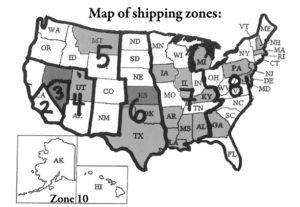
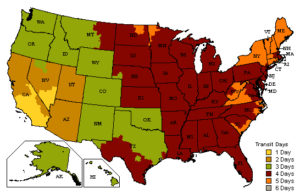
I have been a member of Costco since 1986. I like many of their wine offerings and also believe they represent good value for the money. However, Costco has a limited selection; generally speaking they only carry 150 sku’s in their liquor department. They don’t carry the black Sambuca I like, for example. They also don’t carry an in-depth assortment of offerings from around the world. Additionally, the person that re-stocks the Kendall Jackson at Costco is just as likely to be the person stocking the Kirkland Signature dog food as well; they don’t designate employees to work exclusively in their liquor department. If you shop at Hi-Time Wine Cellars (in person or over the phone), you will have access to a customer-friendly expert in wine and spirits from any area of the world that you are interested in exploring. At any time of the year, that is a resource to be thankful for. Wishing you a very happy holiday season!
Updated on October 16, 2016
Do You Know The King of Wines/The Wine of Kings?
You probably have heard of Barolo before, but do you know much about it?
In the 1800’s red wines were typically sweet. Then the first Prime Minister of Italy started to advocate for dry red wines, particularly from the area of Barolo. The Marquise of Barolo, Giulia Falletti, introduced her dry red wines to the House of Savoy, who in turn introduced it to the royal courts of Europe. Thus began the reign for re dei vini e vino dei re, or the “King of Wines and Wine of Kings.”
The actual grape variety is not Barolo, it is Nebbiolo, long considered Italy’s most noble grape.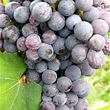 The modern Italian wine quality classification system has granted the area of Barolo (near Alba in Piemonte, Italy, a superior winegrowing region where every single vineyard passes strict quality standards) DOCG status. DOCG stands for Denominazione di Origine Controllata e Garantita, which basically means the area of origin is controlled and guaranteed–the top classification granted.
The modern Italian wine quality classification system has granted the area of Barolo (near Alba in Piemonte, Italy, a superior winegrowing region where every single vineyard passes strict quality standards) DOCG status. DOCG stands for Denominazione di Origine Controllata e Garantita, which basically means the area of origin is controlled and guaranteed–the top classification granted.
DOCG status represents the highest quality in Italy. It has more stringent production standards such as lower permitted yields, higher minimum potential alcohol, and longer aging requirements. Why is aging this particular wine, before it is released, important? Because it allows the wine to evolve and form tertiary characteristics. Click here to read more about primary, secondary and tertiary aromas.
Barolo must be made from 100% Nebbiolo grapes, not just 85% (which is a much more common minimum requirement for many wines to be labeled with a single grape varietal). In addition, it must be grown in a strictly controlled area only 7 miles long and 5 miles wide. The vineyards must be between 550-1800 feet in elevation (any higher and the Nebbiolo grapes would not fully ripen; any lower and they would not reach their full concentration of flavor). Local legend has it that the best vineyard sites are the ones where the snow melts first. The Nebbiolo grapes vinify into wines that have high levels of acid, tannins, alcohol and extract. These characteristics mean it will age well, allowing these components to mellow and balance over time.
Barolo w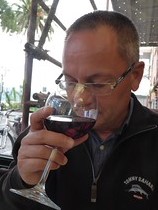 ines are generally pale ruby colored, although they will turn orange after being aged. Intense aromas include fresh red cherry and berries, violet
ines are generally pale ruby colored, although they will turn orange after being aged. Intense aromas include fresh red cherry and berries, violet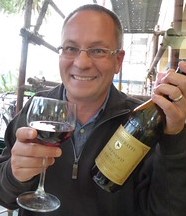 , rose, tar and licorice. With bottle age additional complexity will enhance the aromatics with dried red fruit and flowers, plus leather, tobacco, truffles, mint, sweet spices like nutmeg and cinnamon, and even some gamey/meaty notes. Combining this awesome flavor concentration with full body, acidity and tannins provides a wine tasting experience worth splurging on for a special occasion (this is me…splurging on a bottle of Barolo at a restaurant in Italy).
, rose, tar and licorice. With bottle age additional complexity will enhance the aromatics with dried red fruit and flowers, plus leather, tobacco, truffles, mint, sweet spices like nutmeg and cinnamon, and even some gamey/meaty notes. Combining this awesome flavor concentration with full body, acidity and tannins provides a wine tasting experience worth splurging on for a special occasion (this is me…splurging on a bottle of Barolo at a restaurant in Italy).
In the past winemakers would allow the grape juice to macerate on the red grape skins for a couple of months and then age the wine for about four years in large, neutral oak barrels. This style all but required the additional aging in the bottle, for decades, before all the components of the wine balanced out harmoniously. In the 1980’s winemakers started to tame the wine’s acidity and tannins with new oak and smaller barrels (which allows the wine more direct contact with the oak), this method results in a more fruit forward wine, which is more drinkable at the time the wines are released for sale. All Barolo DOCG wines are aged at least 38 months (with at least 18 months in oak) before they are released for sale. If the label says “Riserva” then it has to have been aged for at least 62 months (also a minimum of 18 months in oak).
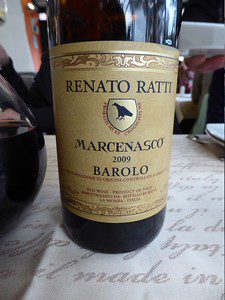
There are five principal villages (producing 90% of the wines) within the Barolo DOCG. They are: La Morra, Barolo, Castiglione Falletto, Monforte d’Alba and Serralunga d’Alba. The soils are not uniform and therefore the resulting wines are different, so here is your guide to reading the labels in order to select the style that suits you best:
The vineyard soils found in the towns of Barolo and La Morra result in wines that are softer, fruitier, more aromatic and ready to drink earlier. Soils of Monforte d’Alba, Serralunga d’Alba and Castiglione Falletto are fuller and more robust. These will require more aging in the bottle before they are ready to drink.
As a rule, the TipsyConcierge does NOT recommend tasting chocolate with wine. This is because food always has a greater impact on wine than wine has on food. The characteristics of the chocolate (sweet or bitter, depending upon the cacao content) will cancel out those characteristics in the wine, leaving you with an unbalanced wine on the palate and an overall suboptimal wine tasting experience. There is one exception to this rule, if you can find the rare Barolo Chinato, which is fortified (additional alcohol) and aromatized; this pairs exceedingly well with dark chocolate.
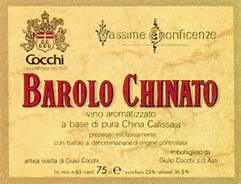
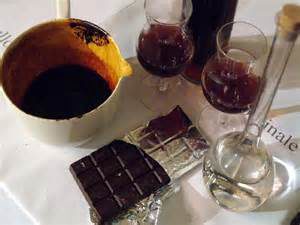
Now…go impress your loved ones with your newfound knowledge of Barolo DOCG wines!
Updated on September 19, 2016
The Next Napa?
Say you’re planning a celebratory milestone birthday…or anniversary…or proposal… Where do you go to make it special? Wine country, of course! But beyond that, since you obviously want to make it memorable, which “wine country” do you pick? Napa is typically the first choice for most of my clients when they ask me to put together a dream itinerary.
Napa is currently celebrating its 40th anniversary of “The Judgment of Paris;” see my earlier blog post about that epic event here. And Napa Valley is, of course, extremely picturesque. On top of that you have some of the most interesting tasting rooms that money can buy, not to mention hot air balloon rides and vineyard tour adventures. Napa is also home to spectacular producers of some of the finest wines on the planet. How could you possibly go wrong deciding on Napa? The answer is quickly becoming, “if you have to ask how much it is going to cost, you probably can’t afford it.”
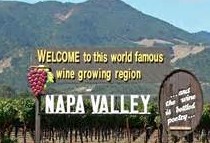
Napa caters to the elite and if you are planning on dropping a significant amount of cash you will be treated well. One of my recent clients was tasting at a high end tasting room and the young lady waiting on him literally stopped talking mid-sentence and walked away to greet a regular wine club member. Certainly there are iconic places to visit whether you like sparkling, white, or red wines of many popular varietals. I often recommend specific cave tours, vineyard tours, sit down tastings paired with food, etc. The thing is, you can get similar experiences for much less on the Central California Coast, in Paso Robles. In many respects, Paso is like Napa was about 30 years ago; it has a reputation for quality, but it doesn’t take itself so seriously that it can overlook “regular people” who are looking to learn, taste, and enjoy their experience in wine country.
But how can Paso Robles possibly compare in experience to Napa? Depending upon what experience you are looking for, there is an answer to that question that will fit your desires—and likely your pocketbook as well. Want to go on a cave tour? How about a vineyard tour? Really want to taste in a high end tasting room with incredible ambiance and panoramic views? Looking to discover a new winery producing award winning wines? Looking for a venue for an event for two…or 200? Paso has it all.
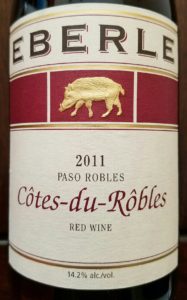 Cave Tour: You can take a complimentary cave tour at Eberle Winery, plus you can taste for free. If you can find a free tasting anywhere in Napa, it is probably something not worth tasting. Gary Eberle is one of the pioneers of Paso winemaking. Complimentary public tours of the production facility and the Eberle Caves run daily every half hour from 10 a.m. – 6 p.m.. No Reservations required except for groups of 10 or more guests.
Cave Tour: You can take a complimentary cave tour at Eberle Winery, plus you can taste for free. If you can find a free tasting anywhere in Napa, it is probably something not worth tasting. Gary Eberle is one of the pioneers of Paso winemaking. Complimentary public tours of the production facility and the Eberle Caves run daily every half hour from 10 a.m. – 6 p.m.. No Reservations required except for groups of 10 or more guests.
 You can also upgrade to a VIP Tour & Tasting, which is enjoyed in the VIP room inside the Eberle Caves. This includes a private tasting with an attendant pairing the wines with cheese. My wife and I celebrated her birthday here with another couple. It is a relaxed, unhurried, pleasant way to spend time in a unique environment.
You can also upgrade to a VIP Tour & Tasting, which is enjoyed in the VIP room inside the Eberle Caves. This includes a private tasting with an attendant pairing the wines with cheese. My wife and I celebrated her birthday here with another couple. It is a relaxed, unhurried, pleasant way to spend time in a unique environment.
Vineyard Tour: Adelaida Vineyards offers a Tour, Taste & Tailgate in the Vineyard. This is a nice way to learn more about the process of growing the grapes. The day of my tour the winemaker and the vineyard manager were active in the vineyard. Ending the tour with some great local food offerings and a selection of wines was an experience I highly recommend. As a bonus, I was able to purchase some 2005 Syrah from their cellar at a price that you would never find in Napa from a producer that had an aged offering they were willing to re-release to the public.
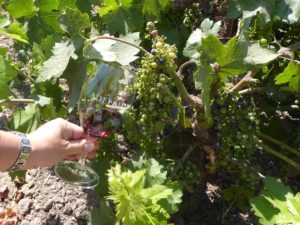

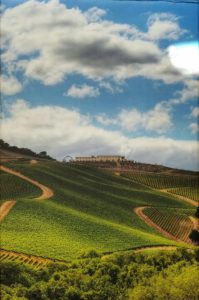 High end tasting room experience: Daou Vineyards not only has some of the better wine offerings, it has a beautifully appointed tasting room and the opportunity to view the valley from a picturesque vantage point—the top of Daou Mountain. No expense has been spared with the lush surroundings, or with the winemaking techniques. Daou has a machine that scans each grape as it passes by on a conveyor belt and if a grape doesn’t meet Daou’s standards, a jet of air pushes the inferior grape out of production. The only other winery I know of that has a similar machine is owned by Kathryn and Craig Hall—in Napa.
High end tasting room experience: Daou Vineyards not only has some of the better wine offerings, it has a beautifully appointed tasting room and the opportunity to view the valley from a picturesque vantage point—the top of Daou Mountain. No expense has been spared with the lush surroundings, or with the winemaking techniques. Daou has a machine that scans each grape as it passes by on a conveyor belt and if a grape doesn’t meet Daou’s standards, a jet of air pushes the inferior grape out of production. The only other winery I know of that has a similar machine is owned by Kathryn and Craig Hall—in Napa.
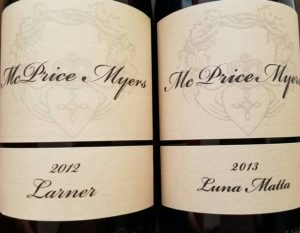 Award Winning Wines You Never Heard Of: McPrice Myers is a Southern California transplant, drawn to this Central Coast viticultural area because of the emergence of the Rhone Rangers (winemakers that promote the grape varietals typically associated with the Rhone Valley in France). Why should you try his wines? Wine Advocate just gave his Beautiful Earth 2013 Proprietary Red (blend of Syrah with some Grenache and Mourvedre) a tremendous 94 points from Wine Advocate. His 2013 High on the Hog Grenache (with 15% Syrah) also garnered a spectacular 92 points for under $25.
Award Winning Wines You Never Heard Of: McPrice Myers is a Southern California transplant, drawn to this Central Coast viticultural area because of the emergence of the Rhone Rangers (winemakers that promote the grape varietals typically associated with the Rhone Valley in France). Why should you try his wines? Wine Advocate just gave his Beautiful Earth 2013 Proprietary Red (blend of Syrah with some Grenache and Mourvedre) a tremendous 94 points from Wine Advocate. His 2013 High on the Hog Grenache (with 15% Syrah) also garnered a spectacular 92 points for under $25.
 Special Occasion Event Location: How about holding your event in an amphitheater, surrounded by a vineyard you can roam, with a beautiful man-made pond and waterfall surrounded by lush landscaping? If you are only looking for a tranquil location for two, this site also boasts a guest room vacation rental by owner rental with all of these amenities at your fingertips. Check out Terra Mia. My wife and I stayed there on our last trip to Paso Robles; equally suited as a hideaway for two or a celebratory environment for a large party.
Special Occasion Event Location: How about holding your event in an amphitheater, surrounded by a vineyard you can roam, with a beautiful man-made pond and waterfall surrounded by lush landscaping? If you are only looking for a tranquil location for two, this site also boasts a guest room vacation rental by owner rental with all of these amenities at your fingertips. Check out Terra Mia. My wife and I stayed there on our last trip to Paso Robles; equally suited as a hideaway for two or a celebratory environment for a large party.

Whether you are looking for a short vacation or planning a larger event, what you want to create is a memory that you will cherish for many years to come. This blog post is just the tip of the iceberg of ideas (my favorite Paso Robles winery isn’t even mentioned). Planned properly, your experience should combine all of your senses. What you see, smell, hear, taste, and touch will all contribute greatly to the quality of the entire encounter. The people at The Tipsy Concierge have many years of firsthand knowledge regarding wine country escapes and events. If you are thinking about a special excursion to wine country, we would like to help you make it special.
Contact us today!
Updated on August 16, 2016
Tipsy Concierge Answers a Question on Wine Education
Dominic F. of North Carolina writes to The Tipsy Concierge:
“Wanting to take my wine education to the next level. Any history/wine region/education books you can recommend to me?”
Wow, loaded question there, Dom! It all starts with what “the next level” means to you. There is a whole lot of information out there, since there are over 10,000 wine grape varieties worldwide.
Most people typically buy a majority of their wines from a certain favorite region—say California, France, Italy or Spain. They often want to know more about the best production areas within that region and which specific producers are considered better than most; they typically don’t want to know about soil types, viticultural techniques and technical wine making options.
For this type of person, I highly recommend visiting: www.totalwine.com
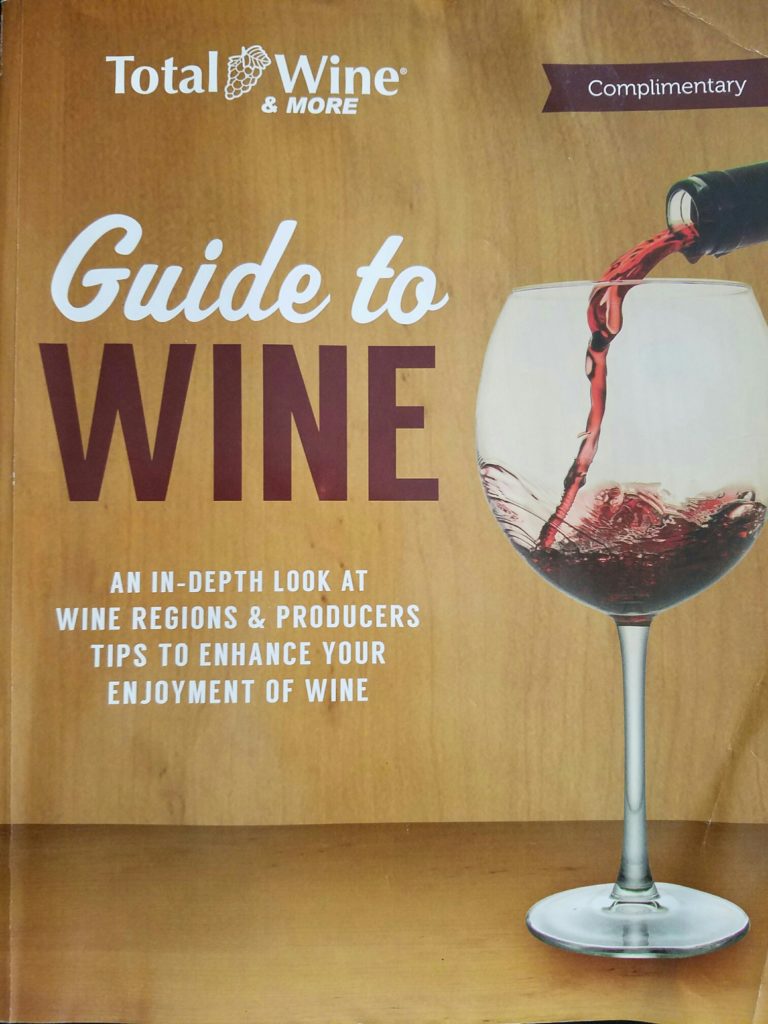 On the site you can click on the “Guides & Advice” tab. This will take you to an online wine guide that covers all of the major varietals most anyone would be interested in trying and learning more about. It also has a section by wine region, which gives a condensed history of that territory. If you live near a Total Wine, they hand out complimentary printed copies of their Guide to Wine.
On the site you can click on the “Guides & Advice” tab. This will take you to an online wine guide that covers all of the major varietals most anyone would be interested in trying and learning more about. It also has a section by wine region, which gives a condensed history of that territory. If you live near a Total Wine, they hand out complimentary printed copies of their Guide to Wine.
The contents of Total Wine’s Guide to Wine will provide an overview of what any good wine course will convey. It is a great reference for learning about wine making (viticulture and vinification), the basics of food and wine pairing, serving temperatures, major varietals and where they grow best, aging, history and maps of wine regions around the world, and of course their specific product offerings from each area that they write about. While Total Wine doesn’t have every producer available for purchase, their selection is incredibly varied and covers the gamut of quality levels—so becoming familiar with their offerings will give you a good feel for specific producers at various quality levels for most wine growing regions.
While you are on the site (and if you have a store nearby), click on their “Classes & Events” tab. There you will find information on weekly wine tastings, special events where you can meet winemakers, and wine classes. My local store recently offered “Wine Wanderings from Spain and Portugal,” “Great Australian Wines from the Davey Family,” “California Uncorked; Napa Valley and Beyond,” and “Total Wine & Cheese: A Guide to Perfect Pairings.” If something tickles your fancy, it usually only costs $10 to $20 to attend. As far as tasting goes, they only charge 10 cents to taste whatever they are pouring (typically about 6 wines). I have been hired to represent various producers and pour samples at their in-store bar. If you live near a Total Wine, this is an economical way to try out various producers’ offerings to see if you like them.
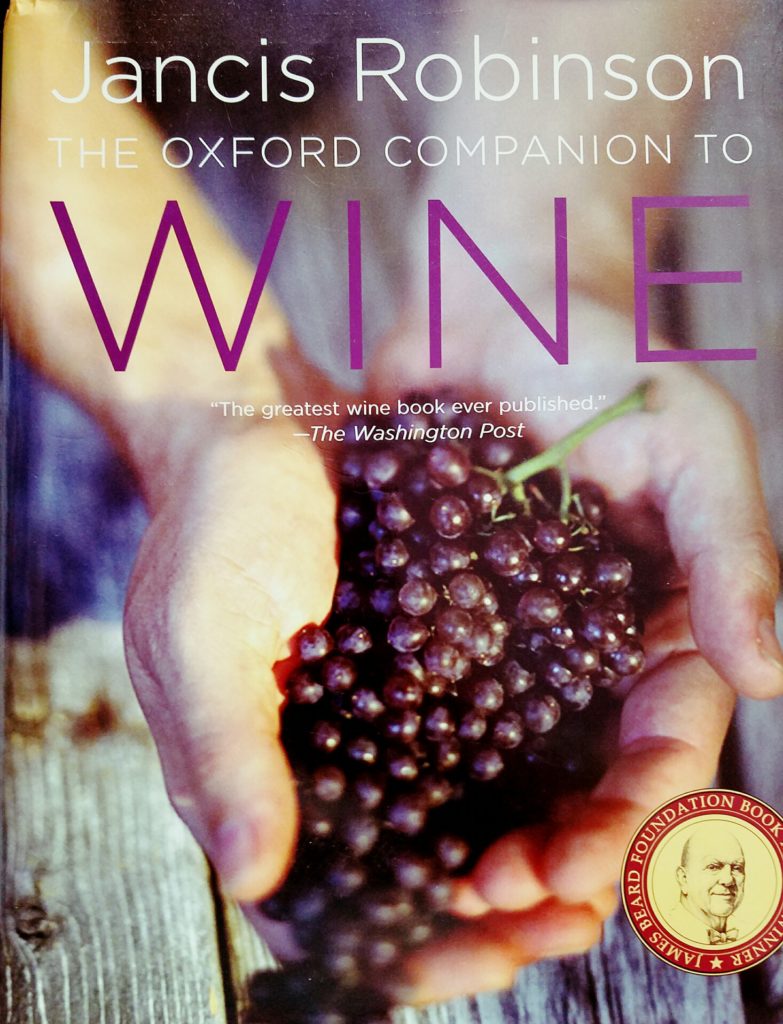 Now, another way to take your education to the next level is to purchase The Oxford Companion to Wine, by Jancis Robinson. The book jacket states that it “offers almost 4,000 entries on every wine-related topic imaginable, from regions and grape varieties to the owners, connoisseurs, growers, and tasters in wine through the ages, from viticulture and oenology to the history of wine…Unlike any other wine book, offering an understanding of wine in all of its wider contexts—notably historical, cultural, and scientific—and serving as a truly companionable point of reference into which any wine-lover can dip and browse.” If you have a topic that you come across, referencing this book will provide you with pretty much anything you would want to know. Plus it looks good on your coffee table. A quick look on Amazon shows you can get it delivered to your door for about $42.
Now, another way to take your education to the next level is to purchase The Oxford Companion to Wine, by Jancis Robinson. The book jacket states that it “offers almost 4,000 entries on every wine-related topic imaginable, from regions and grape varieties to the owners, connoisseurs, growers, and tasters in wine through the ages, from viticulture and oenology to the history of wine…Unlike any other wine book, offering an understanding of wine in all of its wider contexts—notably historical, cultural, and scientific—and serving as a truly companionable point of reference into which any wine-lover can dip and browse.” If you have a topic that you come across, referencing this book will provide you with pretty much anything you would want to know. Plus it looks good on your coffee table. A quick look on Amazon shows you can get it delivered to your door for about $42.
 One of my favorite ways to learn more (and to pick up on the latest trends) is through my subscription to Wine Spectator magazine. Their articles could easily spark an interest in a specific producer or region. Of course, reading blogs like The Tipsy Concierge could very well serve a similar purpose. A simple internet search also provides additional information from bloggers, producers, distributors, government and trade associations, as well as certification bodies out there that would love to provide you with a formal education. I started out with an intermediate class from the Wine & Spirit Education Trust (WSET) and now have their advanced certification, as well as a French Wine Scholar certification from the Wine Scholar Guild. Currently I am enrolled in the Italian Wine Scholar certification course and plan to take the Spanish Wine Scholar certification next.
One of my favorite ways to learn more (and to pick up on the latest trends) is through my subscription to Wine Spectator magazine. Their articles could easily spark an interest in a specific producer or region. Of course, reading blogs like The Tipsy Concierge could very well serve a similar purpose. A simple internet search also provides additional information from bloggers, producers, distributors, government and trade associations, as well as certification bodies out there that would love to provide you with a formal education. I started out with an intermediate class from the Wine & Spirit Education Trust (WSET) and now have their advanced certification, as well as a French Wine Scholar certification from the Wine Scholar Guild. Currently I am enrolled in the Italian Wine Scholar certification course and plan to take the Spanish Wine Scholar certification next.
Below are several education options to consider:
- Certified Wine Educator (CWE) from the Society of Wine Educators
- Certified Specialist of Wine (CSW) also from the Society of Wine Educators
- Diploma in Wine and Spirits (DipWSET) from the Wine & Spirit Education Trust
- Introductory Sommelier from the Court of Master Sommeliers
Of course, short of certification, you can take classes up to the level of challenge and interest that you desire. The beginning courses provide a framework that is sufficient to be conversant with anyone in the industry, even if you don’t plan to embark on a new career.
So keep reading, keep tasting, and keep asking questions! Thank you for writing in and feel free to contact me again!
Updated on July 15, 2016
Be Your Own Mixologist for Fun and Better Cocktails (Recipes Included!)
I enjoy grilling and my wife has taken a liking to mixology. If that isn’t a match made in heaven, I don’t know what is. There are two things I particularly like about summertime: 1) at some point in the early evening the outside temperature reaches the perfect comfort level; 2) plentiful harvests this time of year yield delicious, inexpensive fresh fruits, herbs, and vegetables.

I don’t know about you, but I am consistently disappointed whenever I go out and order drinks. It seems rare when the bartender can replicate the version of the drink I’ve pictured in my mind. And what’s worse, then I have to pay the inflated bar bill for something that I didn’t enjoy as much as I envisioned when I ordered it. We know that wines are routinely placed on the menu at a 400% markup; mixed drinks are even higher than that!
Take a simple “Jack and Coke.” My local supermarket sells the 1.75 liter of Jack Daniel’s whiskey for $32.99 and four 12-packs of Coca Cola for $11.00. Some basic math tells me that the cost of mixing 2 oz of Jack and 10 oz. of Coke easily comes out to less than $1.50 per drink. This bar standard, at around $12-$15, has done so well it is now available pre-mixed in cans at the store. A can sets you back about $7.00, so…why would anyone order a mixed drink instead of making their own?
One simple reason for purchasing overpriced drinks—convenience. It is easy to blame the millennials with advocating for convenience and being willing to pay a premium price for it. Blogger Mike at Choosy Beggars writes, “a man who won’t get out of his chair out of fear of losin’ a video game is also a man who doesn’t have time to mix his own drinks.” One of his vocal detractors only served to reinforce this attitude; LKid comments on his post: “I am never going to buy a bottle of Jack Daniels. That is the truth. I am, however, going to keep buying Jack Daniels and Coke in a can because I can drink it on the beach and everyone thinks it is a Coke Zero can from a couple of feet.” Personally, I would be more likely to mix my own Jack and Coke and put it in a Coke Zero can if that was what I wanted to drink on the beach.
All this being said, I actually will order a $20 Cosmopolitan at Olive’s Restaurant at the Bellagio Hotel in Las Vegas. Which brings me to the second reason people are willing to overpay for a drink—ambiance. I know that this drink at this restaurant is always perfectly crafted, plus I can watch the famous fountains dancing to a classically choreographed melody while I enjoy my cocktail. Similarly, there are destinations I look to nearby my home for a special date night cocktail—as often for the experience as for the drink itself. I know the beverages are overpriced, but when I can get a 180 degree view of the ocean from a hotel rooftop or perhaps a well made cocktail along with a nosh that I couldn’t have replicated at home at a popular local restaurant with good atmosphere, I can be persuaded.
Talk to your Uber driver the next time you summon a ride. You may hear how sick he or she is with people that take the service for a short ride to their nearest bar so they can drink without worrying about a DUI later in the evening. With the advent of pre-mixed drinks and/or various flavored alcohol options available, the trend is towards “pre-loading” the group with a cocktail (or two) before a night out on the town. While this trend may be acting responsibly with regard to drinking and driving, it is certainly at odds with another popular trend—appreciating the resurgence of the craft cocktail. I submit that expanding your aptitudes to include some basic mixology is worth the investment. Not only will you likely be drinking far superior craft cocktails, with quality ingredients you will appreciate, but also the preparation itself is a socializing opportunity. Everyone can provide input—often leading to a superior recipe for future get-togethers.
What sets apart a really good cocktail is, quite simply, fresh ingredients. The really great bars are stocked with fresh cucumbers, lemons, limes, basil, cilantro, etc. (for squeezing fresh juice or to muddle in essential oils), in order to craft something special. Wouldn’t you rather have a Coke with a real lemon or lime slice served alongside to flavor it just the way you like, instead of a pre-mixed concoction? Even a savvy millennial will tell you that ordering french fries at McDonalds without salt will get you a fresh batch. So even if you plan to salt it anyway, it always tastes better if it is freshly made.
With that said, here are some ideas for inexpensive summer cocktails that my mixologist wife regularly whips up in our kitchen—a refreshing way to start out an enjoyable evening, whether entertaining others or just on our own.
Joy’s Nearly World Famous Cosmopolitan Recipe
Start with juicy limes (costing eight for $1 these days—six should yield about a cup).
 Mix the following:
Mix the following:
- 1 ½ oz. vodka
- ½ oz. Cointreau
- ¾ oz. fresh lime juice
- ½ oz. cranberry juice
- ¼ oz. Agave syrup (or alternatively, make simple syrup by mixing equal parts water and sugar. Start by boiling the water, then add sugar and stir until it dissolves, then let it cool).
Place all ingredients in a shaker with ice. Shake vigorously to chill. Then pour and garnish.
VOILA!
Joy’s Equally World Famous Basil/Cucumber Muddled Martini Recipe
Muddle cucumber and basil* in the bottom of a shaker. Pour ice on top.
- 1 ½ oz vodka
- 1 oz lime juice
- ¼ oz. Agave or simple syrup
Garnish with a basil leaf and slice of cucumber.
*Can substitute with mint
 As Frank Sinatra once said, “I feel sorry for people who don’t drink. When they wake up in the morning, that’s as good as they’re going to feel all day.”
As Frank Sinatra once said, “I feel sorry for people who don’t drink. When they wake up in the morning, that’s as good as they’re going to feel all day.”
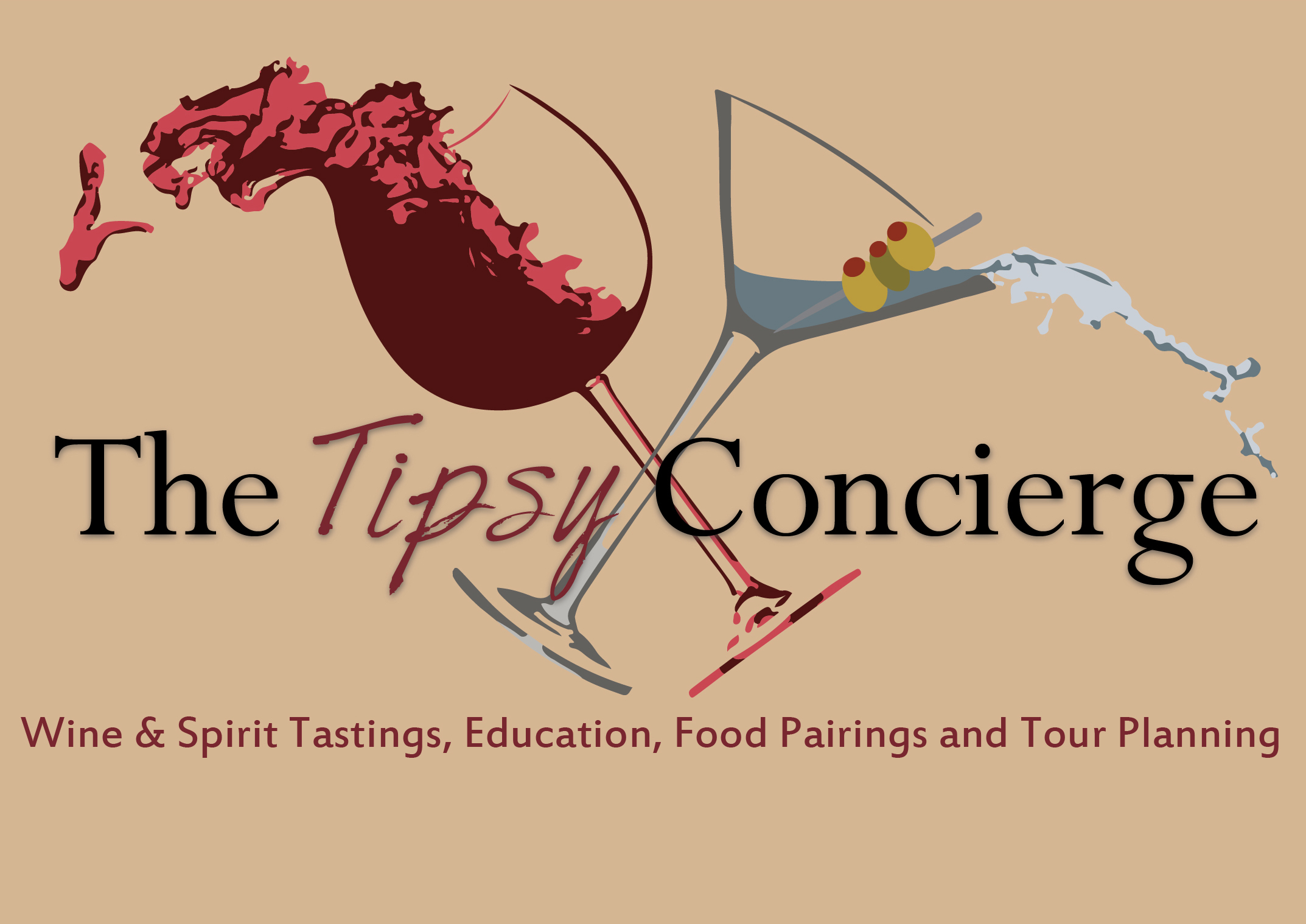
















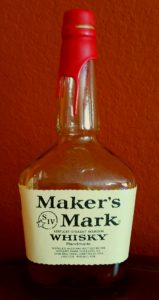 We arrived for our “Heritage Tour” at the distillery where we quickly learned our group was mostly made up of Ambassadors (more information about what this means later!). We were led to a sitting room in the main house to hear the story of the Maker’s Mark business from Rob Samuels, Chief Operating Officer. Rob is also the grandson of founder Bill Samuels, Sr. and, we soon learned, is the “Ambassador-In-Chief.”
We arrived for our “Heritage Tour” at the distillery where we quickly learned our group was mostly made up of Ambassadors (more information about what this means later!). We were led to a sitting room in the main house to hear the story of the Maker’s Mark business from Rob Samuels, Chief Operating Officer. Rob is also the grandson of founder Bill Samuels, Sr. and, we soon learned, is the “Ambassador-In-Chief.”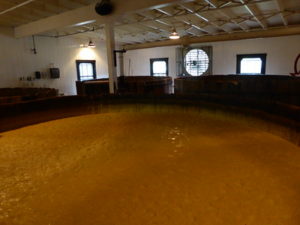
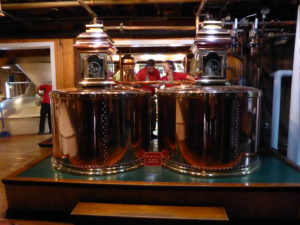 sizes (see previous Tipsy Concierge distillery blog posts for Jack Daniel’s distillery
sizes (see previous Tipsy Concierge distillery blog posts for Jack Daniel’s distillery 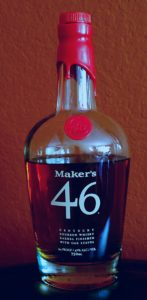 . They tried many new mashbills, searching for the best. And they came up with…their original recipe. So now, how to make it better? Many producers use other barrel influences to “finish” their product. Angels Envy uses port barrels, as an example. Maker’s Mark chose to additionally age their product with French barrel staves over the winter months. On their 46th trial they determined that using ten, seared French oak staves was the ticket. This is how Maker’s Mark 46 was born. Rob Samuels let us in on a little secret. As the property’s landscape is not flat, it lended itself to the creation of a cave. Caves are used all the time for aging wine, since the temperature needs to be warm enough to age, but cold enough to avoid refermentation. Caves approximate winter temperatures. As Maker’s 46 has only been made to date during winter months, that must imply….
. They tried many new mashbills, searching for the best. And they came up with…their original recipe. So now, how to make it better? Many producers use other barrel influences to “finish” their product. Angels Envy uses port barrels, as an example. Maker’s Mark chose to additionally age their product with French barrel staves over the winter months. On their 46th trial they determined that using ten, seared French oak staves was the ticket. This is how Maker’s Mark 46 was born. Rob Samuels let us in on a little secret. As the property’s landscape is not flat, it lended itself to the creation of a cave. Caves are used all the time for aging wine, since the temperature needs to be warm enough to age, but cold enough to avoid refermentation. Caves approximate winter temperatures. As Maker’s 46 has only been made to date during winter months, that must imply….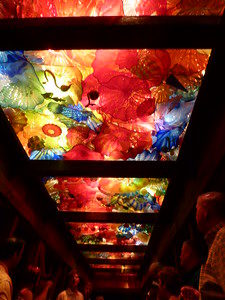
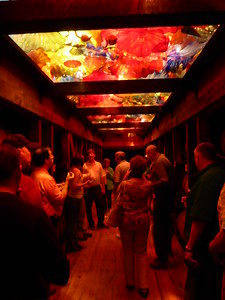
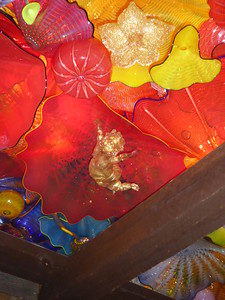 Widely known for his creation of the glass sculpture that graces the ceiling of the registration lobby at the Bellagio hotel in Las Vegas, Dale Chihuly was the object of Rob Samuels’ efforts to commission one of these singular creations for the ceiling of the Maker’s Mark featured aging room. His requests kept getting rejected, so Rob sat down and wrote a personal letter to Dale Chihuly. In it he explained that Maker’s Mark distillery was on the National Register of Historic Places, that he was looking for something unique, had his heart set on commissioning Chihuly glass and had been disheartened by his rejections thus far. This time Rob received a positive response from Dale Chihuly himself, explaining that Rob’s prior requests had never made it to his desk. His personal request for a commission granted, a friendship between Rob Samuels and Dale Chihuly resulted from the interaction during the process of the glass creation and installation.
Widely known for his creation of the glass sculpture that graces the ceiling of the registration lobby at the Bellagio hotel in Las Vegas, Dale Chihuly was the object of Rob Samuels’ efforts to commission one of these singular creations for the ceiling of the Maker’s Mark featured aging room. His requests kept getting rejected, so Rob sat down and wrote a personal letter to Dale Chihuly. In it he explained that Maker’s Mark distillery was on the National Register of Historic Places, that he was looking for something unique, had his heart set on commissioning Chihuly glass and had been disheartened by his rejections thus far. This time Rob received a positive response from Dale Chihuly himself, explaining that Rob’s prior requests had never made it to his desk. His personal request for a commission granted, a friendship between Rob Samuels and Dale Chihuly resulted from the interaction during the process of the glass creation and installation.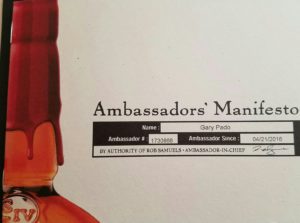
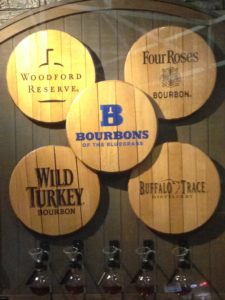 Our arrival being too late in the day to visit a distillery, my wife and I ventured along Main Street in downtown Lexington and dined at Tony’s Steaks and Seafood. This proved to be a wise decision as our choices from the menu’s various food options were well prepared and delicious, not to mention the reasonably priced wines by the glass were appealing us as California wine lovers. Our server, in fact, was a Southern California college student, home during her school break. The next morning my wife and I were ready to experience quintessential Kentucky with an extended distillery tour in the morning and horse racing in the afternoon!
Our arrival being too late in the day to visit a distillery, my wife and I ventured along Main Street in downtown Lexington and dined at Tony’s Steaks and Seafood. This proved to be a wise decision as our choices from the menu’s various food options were well prepared and delicious, not to mention the reasonably priced wines by the glass were appealing us as California wine lovers. Our server, in fact, was a Southern California college student, home during her school break. The next morning my wife and I were ready to experience quintessential Kentucky with an extended distillery tour in the morning and horse racing in the afternoon!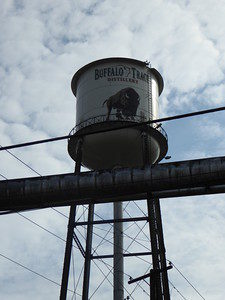 Having recently passed my expert level examination on spirits from the Wine and Spirit Education Trust, I found the Buffalo Trace Distillery tour utterly riveting. This is mainly because they provide a lot of detail regarding the entire process. They pride themselves on having the “highest standards in the industry.” It was evident that the tour guide would easily be able to pass the examination, should it only pertain to whiskey. To my surprise my wife also enjoyed the tour just as much, for the ambience (we could probably enjoy sitting in the aging warehouse to smell the mellowing whiskey barrels all day) and the interesting flow of the tour keep you engaged as you are taken through the whiskey making process from start to finish.
Having recently passed my expert level examination on spirits from the Wine and Spirit Education Trust, I found the Buffalo Trace Distillery tour utterly riveting. This is mainly because they provide a lot of detail regarding the entire process. They pride themselves on having the “highest standards in the industry.” It was evident that the tour guide would easily be able to pass the examination, should it only pertain to whiskey. To my surprise my wife also enjoyed the tour just as much, for the ambience (we could probably enjoy sitting in the aging warehouse to smell the mellowing whiskey barrels all day) and the interesting flow of the tour keep you engaged as you are taken through the whiskey making process from start to finish.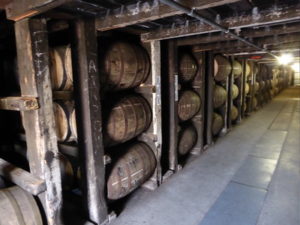
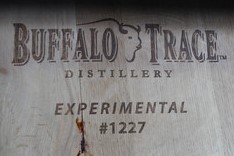 The Buffalo Trace facility also produces the following brands:
The Buffalo Trace facility also produces the following brands:
